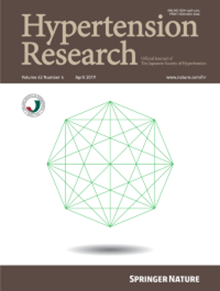螺内酯抑制类固醇生成急性调节蛋白(StAR)在心肌中的表达,有助于改善肺动脉高压患者的右心室重塑。
IF 4.3
2区 医学
Q1 PERIPHERAL VASCULAR DISEASE
引用次数: 0
摘要
肺动脉高压(PAH)是一种进展性疾病,经常导致右心室(RV)重塑。醛固酮可促进血管和右心室重塑。类固醇生成急性调节蛋白(StAR)的上调会刺激醛固酮的合成。然而,在 PAH 条件下,StAR 在心肌中的表达仍然未知。为了研究 StAR 在 PAH 心肌中的表达及其与 RV 重塑的关系,我们使用了螺内酯作为治疗手段。我们使用雄性 Sprague-Dawley 大鼠建立了 PAH 模型,对其皮下注射 Sugen5416(20 毫克/千克),并将其暴露于低氧(10% 氧气)环境中 2 周,然后再进行 2 周的常氧。然后将动物分成两组,一组接受螺内酯(25 毫克/千克/天)治疗 4 周,另一组不接受治疗。在接受或不接受螺内酯治疗的缺氧条件下(37 °C、1% O2、5% CO2)培养 H9c2 细胞。在模型大鼠中,RV 收缩压和 Fulton 指数在暴露于 Sugen5416 和缺氧条件下都会升高,而螺内酯治疗后则会显著降低。在 H9c2 细胞中,缺氧暴露会使醛固酮水平升高,而螺内酯治疗会明显抑制醛固酮的产生。通过螺内酯抑制心肌中StAR的表达有助于改善PAH患者的RV重塑。螺内酯可能会为 PAH 患者的 RV 重塑提供一种有价值的治疗策略。本文章由计算机程序翻译,如有差异,请以英文原文为准。

Suppressing the expression of steroidogenic acute regulatory protein (StAR) in the myocardium by spironolactone contributes to the improvement of right ventricular remodeling in pulmonary arterial hypertension
Pulmonary arterial hypertension (PAH) is a progressive condition that frequently leads to right ventricular (RV) remodeling. Aldosterone promotes vascular and RV remodeling. The upregulation of steroidogenic acute regulatory protein (StAR) stimulates aldosterone synthesis. However, the expression of StAR in the myocardium under PAH conditions remains unknown. To investigate the expression of StAR in the myocardium and its association with RV remodeling in PAH, utilizing spironolactone as a treatment. A PAH model was created using male Sprague-Dawley rats, which received a subcutaneous injection of Sugen5416 (20 mg/kg) and were exposed to hypoxia (10% O2) for 2 weeks, followed by 2 weeks of normoxia. The animals were then divided into two groups, with one group receiving spironolactone (25 mg/kg/day) for an additional 4 weeks, while the other group did not. H9c2 cells were cultured under hypoxic conditions (37 °C, 1% O2, 5% CO2) with or without spironolactone treatment. In the model rats, RV systolic pressure and the Fulton index, both of which increased upon exposure to Sugen5416 and hypoxia, significantly decreased with spironolactone treatment. In H9c2 cells, hypoxic exposure elevated aldosterone levels, while spironolactone treatment significantly suppressed aldosterone production. Suppression of StAR expression in the myocardium via spironolactone contributes to the improvement of RV remodeling in PAH. Spironolactone may offer a valuable therapeutic strategy for RV remodeling in patients with PAH.
求助全文
通过发布文献求助,成功后即可免费获取论文全文。
去求助
来源期刊

Hypertension Research
医学-外周血管病
CiteScore
7.40
自引率
16.70%
发文量
249
审稿时长
3-8 weeks
期刊介绍:
Hypertension Research is the official publication of the Japanese Society of Hypertension. The journal publishes papers reporting original clinical and experimental research that contribute to the advancement of knowledge in the field of hypertension and related cardiovascular diseases. The journal publishes Review Articles, Articles, Correspondence and Comments.
 求助内容:
求助内容: 应助结果提醒方式:
应助结果提醒方式:


